#Lunar descent stage propulsion
Text
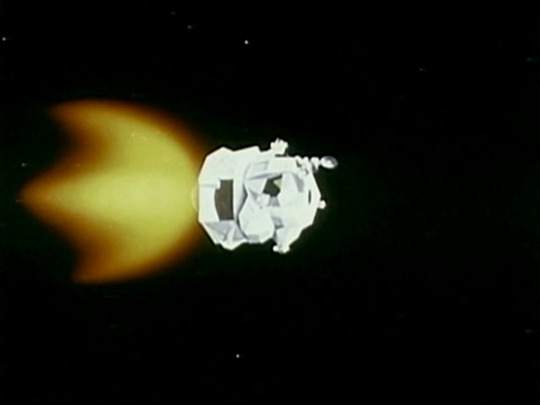
Concept art of Apollo 5 Lunar Module (LM-1) firing its descent propulsion system (DPS).
Date: January 22, 1968
source
#Apollo 5#Lunar Module#LM-1#NASA#Apollo Program#B-type mission#Descent Propulsion System#Lunar Module Descent Engine#LMDE#Lunar descent stage propulsion#TRW VTR-10#Rocket Engine#Concept Art#January#1968#Space#my post
22 notes
·
View notes
Text

Flying first on Ariane 6
With Europe's new Ariane 6 rocket now at its spaceport in French Guiana, the passengers it will launch to space are getting ready to be added to the top of the tall new rocket. Ariane 6 will launch several satellites, deployers and experiments from space agencies, companies, research institutes, universities and young professionals on its first flight.
"Ariane 6 is designed to be versatile, offering space actors bespoke launch options all while keeping costs down," says Michel Bonnet, head of Ariane 6 missions and system engineering and ESA's lead for the Ariane 6 inaugural flight. "The varied missions launching on the first flight, from nine countries and dozens of organizations, are a perfect demonstration of the team spirit behind this rocket and the design ethos that underpins it."
From established players like NASA to students designing their first ever satellite, these missions will measure gamma rays, track wildlife, test self-healing solar cells, confirm the theory of black body radiation and more. There's a smart-farming satellite, a radio beacon demonstrator, experiments that will remain attached to the rocket's payload "adaptor" and even capsules destined to reenter Earth's atmosphere to test new materials—Ariane 6's first flight will be packed with technology as its first payloads are sent on their way into space.
This plethora of missions is being supplied by three types of organizations: commercial companies, space agencies and universities. Together they have been building hardware to test and prove their technology works in space; satellites to measure weather on Earth or in the solar system; study the sun and perform other science experiments.
Ready, set, deploy
Four deployers, including the multi-CubeSat deployers RAMI and EXOpod, will release satellites away from the Ariane 6 upper stage.
The two reentry capsules and nine satellites that are set to fly free are placed at the top of the rocket in order of their release, perfectly timed to be set on their way after leaving their Ariane 6 nest, 600 km above Earth.
Cubesat deployers are like mini launchers in their own right, orchestrating a series of spring-loaded ejections to shoot one or multiple miniature satellites from the Ariane launcher at the right time, speed and in the right direction to set them on their way. As the CubeSats don't have their own propulsion, they will stay in the same orbit Ariane 6 releases them into.
Many missions
Not all the missions will fly free. One mission, YPSat, will stay attached to the upper stage of the Ariane 6 to record the whole mission from launch to end. Four other experiments will remain fixed, performing their work for the duration of the rocket's flight and returning altogether in unison, like skydivers holding tight for their Earth descent.
"The first flight of a new rocket is always an astounding moment as there are hundreds of thousands of details that have to work in perfect harmony—for the first time together in full," says Loïc Bourillet, head of ESA's Collective Launch Service Procurement.
"Rather than only launching an inert dummy payload as a stand in for larger satellites, we have a large platform that also offers a unique opportunity to accommodate smaller, data gathering payloads. I am incredibly pleased with the scale of space hardware that has been designed and built. It's a testament to the inventive minds of our generation."
The YPSat flight model during vibration testing at ESA's Mechanical Systems Lab in October 2022, with YPSat team leader and Young Graduate Trainee Julien Krompholtz. Credit: European Space Agency
All eyes on Ariane 6
ESA's young professional satellite, YPsat, will take pictures and video of the Ariane 6 rocket itself once it flies free. Tatjana Mandil, a communications officer for YPsat when she is not working as a trainee engineer on lunar Gateway modules, says "A launcher's first flight is always much anticipated and attracts lots of attention. It is going to be wild to know our team's satellite is at the top of ESA's new rocket, and we hope to add to the spectacle when we can share the video of the satellites releasing into Earth orbit."
IMAGE....Europe’s Ariane 6 launcher covers a broad range of commercial and institutional applications while dramatically decreasing the cost of launches compared to Ariane 5. Credit: ArianeGroup, European Space Agency
3 notes
·
View notes
Text
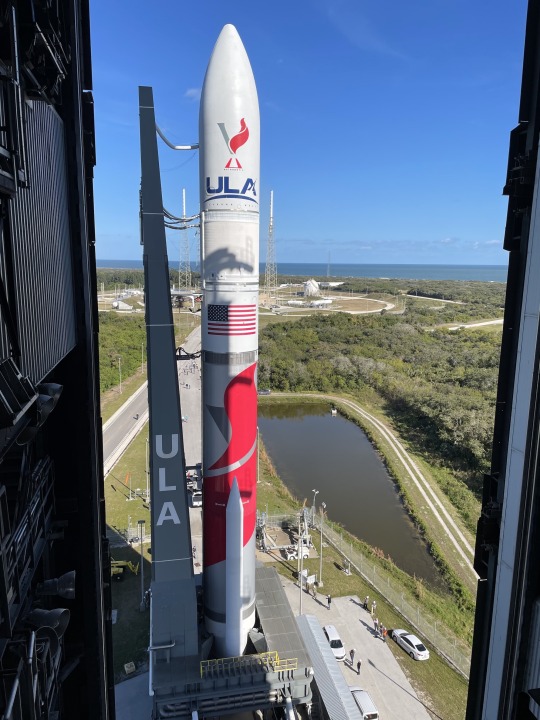
Launching early tomorrow morning (8 Jan), at 07:18GMT, will be the first Vulcan Centaur (V-001), ULA's somewhat belated commercial response to SpaceX's Falcon 9 which began development in 2015, although none of it is reusable (later version might have a recoverable engine module, see below). It can be fitted with 2, 4 or six GEM-63XL SRB which are also now used on the Atlas V (The Atlas V although no longer in production will continue in use until the inventory is used up, the SLC-41 pad can launch either rocket). This launch will also be the first flight of the Blue Origin BE-4 methane/liquid oxygen engine, of which Vulcan has two. Developed jointly with ULA these are comparable to SpaceX's Raptor engines used on Starship. The BE-4 engines will also be used on Blue Origins New Glenn super heavy rocket, a competitor to SpaceX's Starship super heavy.
It will also be the first flight of a Centaur-V, a new 5.4m (18ft) diameter version of the Centaur upper stage powered by two Aerojet Rocketdyne RL-10C-1-1 Liquid Hydrogen/Liquid Oxygen engines.
If that was not enough this will also be the first of NASA's Commercial Lunar Payload Service (CLPS-1) missions, a Lunar landing mission using the Peregrine lander built by Astrobotic Technology. The idea is like the commercial supply mission to the ISS, NASA will buy space onboard Lunar landers built and owned by commercial companies for experiments and ultimately supplies in support of crewed Artemis Lunar missions (more on that if the launch is successful).
Also onboard will be the 20th mission for the Celestis space memorial service. For a large fee you can send the ashes (or at least a small representative sample), and/or their DNA sample, of your departed loved one in a small inscribed canister and depart them further... into space. This mission will include two batches, one on the lander called "Tranquility Flight" and one attached to the Centaur-V upper stage (I presume the container remains attached) which will, once used, go into heliocentric (solar) orbit called "Enterprise Flight". Tranquility Flight will include the DNA of Arthur C. Clarke and Enterprise Flight will include the remains/DNA of Gene Roddenbery and Majel Barrett Roddenbery (Nurse Chapel, Lwaxana Troi and voice of the Ships computer) and the DNA of their living son Eugene "Rod" Roddenberry, James Doohan (Scotty) and his wife Wende and Nichelle Nichols (Nyota Uhura) and her living son Kyle Johnson's DNA. Prices for Earth orbit start from USD4,995 (GBP3,926) and for the Lunar surface service USD12,995. (GBP10,214). Their website did not give the figure for heliocentric orbit (no chance of reentry with that one though).
The Vulcan first stage could in future be fitted with the Sensible Modular Autonomus Return Technology (SMART) system. Were the engine bay of the Vulcan first stage would separate as a module, also containing the launchers avionics, and reenter using an inflatable heatsheild. On descent it will deploy a parafoil before it is air recovered by a large helicopter (a Sikorsky CH53 Sea Stallion or Boeing CH46 Sea Kinight have been shown in graphics). This will recover 65% of the cost of the launcher without the fuel penalty of propulsive stage recovery systems (which ULA considered at the time to be economically unviable...ops!). However nothing has been shown of any development of such hardware since that was first mentioned in 2015. Pic: ULA roll out on 5 Jan.
0 notes
Text
[ad_1]
Introduction
Chandrayaan-3 is the third and most up-to-date lunar Indian Area Analysis exploration mission beneath the Chandrayaan programme of ISRO. Ofcourse, Chandrayaan-3 isn't just an indication of India’s rising technical capabilities in house exploration but in addition goals to make vital scientific discoveries in an unexplored territory on Moon. As India’s Chandrayaan-3’s mission is on its solution to success, right here’s a flashback from a risk perspective of one of the profitable moon missions on the earth.
The Apollo 11 mission is a permanent image of human achievement, marking the primary profitable moon touchdown in historical past. Behind this historic feat lies an intricate internet of threat administration methods that allowed NASA to navigate the complexities of house journey and make sure the security of the astronauts. On this article, we'll delve deep into the teachings realized from the Apollo 11 mission, exploring how NASA’s threat administration method formed its success and the way these classes might be utilized to varied domains.
Complete Danger Identification: One of many foundational pillars of NASA’s threat administration method throughout Apollo 11 was the great identification of potential dangers. The mission encompassed a collection of intricate phases, from launch and lunar orbit to the lunar touchdown and the return to Earth. Every of those phases introduced forth a large number of dangers, each recognized and unexpected.
Instance 1: Launch Dangers
The launch of the Saturn V rocket was fraught with dangers. The explosive potential of the rocket’s gasoline and the intricacies of staging required cautious consideration. To mitigate these dangers, NASA engineers carried out in depth simulations and checks to make sure the rocket’s structural integrity and the reliability of its propulsion techniques.
Instance 2: Lunar Touchdown Challenges
Touchdown on the moon was an unprecedented endeavor, and the dangers had been magnified by the unknown lunar floor situations. The danger of a crash touchdown was vital. NASA tackled this by using the lunar module’s descent engine to manage the spacecraft’s pace and descent trajectory, permitting Neil Armstrong to pilot the module to a safer touchdown web site when he acknowledged the deliberate web site was strewn with boulders.
Prioritizing and Categorizing Dangers: Not all dangers are equal when it comes to their potential influence. NASA employed a threat matrix to categorize dangers based mostly on their severity and chance. This categorization enabled the crew to prioritize their efforts and assets in the direction of addressing essentially the most crucial dangers.
Instance 3: Danger Matrix for Astronaut Security
Astronaut security was a paramount concern. The danger matrix helped NASA determine potential hazards that might jeopardize the astronauts’ lives. This included dangers associated to life assist techniques, radiation publicity, and gear failures. By specializing in high-impact, high-likelihood dangers, NASA ensured that the astronauts had been adequately protected all through the mission.
Innovation and Inventive Downside-Fixing: The Apollo 11 mission demonstrated NASA’s distinctive capability for innovation and inventive problem-solving within the face of surprising challenges.
Instance 4: The Lunar Module Pc Anomaly
In the course of the lunar descent, the onboard laptop of the lunar module (LM) began receiving extra information than it might course of, triggering a number of alarms and threatening to abort the touchdown. Astronauts Neil Armstrong and Buzz Aldrin needed to shortly assess the scenario and decide to proceed the descent manually. Their means to adapt beneath strain exemplified the significance of human judgment and inventive considering as backup options.
Growing Contingency Plans: A core aspect of Apollo 11’s threat administration technique was the event of contingency plans.
These plans had been crucial for making certain the protection of the astronauts and the success of the mission even within the face of surprising occasions.
Instance 5: Abort Procedures
The Apollo 11 spacecraft had well-defined abort procedures for various phases of the mission. Within the occasion of an emergency throughout launch, lunar orbit, or lunar touchdown, the crew might execute particular maneuvers to securely return to Earth or the command module. These procedures acted as lifelines, offering a transparent plan of action in case of crucial failures.
Actual-time Monitoring and Adaptation: Apollo 11’s journey to the moon wasn’t a static, preplanned trajectory. It required steady real-time monitoring and flexibility to answer evolving dangers and challenges.
Instance 6: Mid-Course Corrections
In the course of the journey to the moon, the spacecraft sometimes required mid-course corrections to make sure correct trajectory. The mission management crew needed to analyze information, assess dangers, and calculate exact maneuvers to maintain the spacecraft on its meant path. This real-time adjustment highlighted the significance of monitoring and responsiveness.
Studying from Failures: Tragedy struck NASA with the Apollo 1 accident, during which a cabin fireplace throughout a pre-launch check claimed the lives of astronauts Gus Grissom, Ed White, and Roger Chaffee. This incident emphasised the significance of studying from failures to boost threat administration.
Instance 7: The Apollo 1 Tragedy
The Apollo 1 catastrophe led NASA to overtake its method to security. The investigation into the incident resulted within the identification of design flaws and procedural inadequacies that contributed to the accident. NASA used this painful lesson to refine security protocols, enhance communication, and develop a security tradition that permeated subsequent missions.
Conclusion
The Apollo 11 mission stands as a testomony to human dedication, innovation, and risk management. The profitable moon touchdown was not merely a results of luck, however a fastidiously orchestrated dance of meticulous planning, adaptability, and a dedication to astronaut security. The danger administration classes realized from Apollo 11 proceed to resonate throughout industries, demonstrating the worth of thorough risk identification, artistic problem-solving, contingency planning, real-time adaptation, and studying from failures. As we forge forward into new frontiers, the legacy of Apollo 11 serves as a guiding mild for these looking for to handle dangers and obtain the extraordinary.
[ad_2]
0 notes
Text
10 Things: CubeSats — Going Farther
Now that the MarCOs — a pair of briefcase-sized interplanetary CubeSats — seem to have reached their limit far beyond Mars, we’re looking forward to an expanding era of small, versatile and powerful space-based science machines.
Here are ten ways we’re pushing the limits of miniaturized technology to see just how far it can take us.
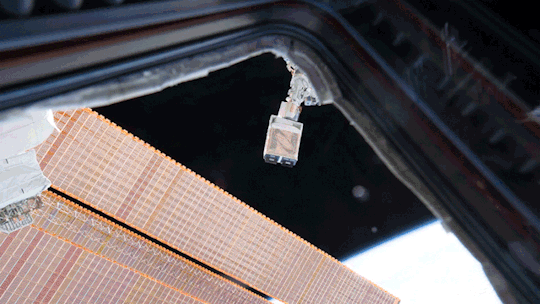
1. MarCO: The Farthest (So Far)
MarCO, short for Mars Cube One, was the first interplanetary mission to use a class of mini-spacecraft called CubeSats.
The MarCOs — nicknamed EVE and WALL-E, after characters from a Pixar film — served as communications relays during InSight's November 2018 Mars landing, beaming back data at each stage of its descent to the Martian surface in near-real time, along with InSight's first image.
WALL-E sent back stunning images of Mars as well, while EVE performed some simple radio science.
All of this was achieved with experimental technology that cost a fraction of what most space missions do: $18.5 million provided by NASA's Jet Propulsion Laboratory in Pasadena, California, which built the CubeSats.
WALL-E was last heard from on Dec. 29; EVE, on Jan. 4. Based on trajectory calculations, WALL-E is currently more than 1 million miles (1.6 million kilometers) past Mars; EVE is farther, almost 2 million miles (3.2 million kilometers) past Mars.
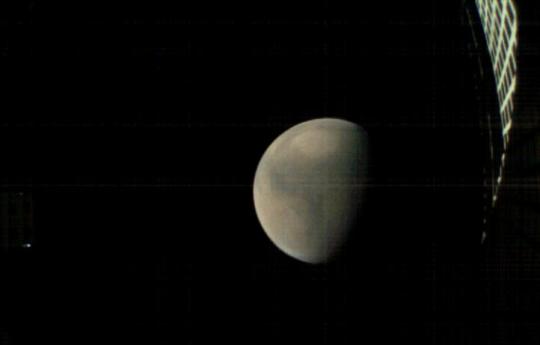
MarCO-B took these images as it approached Mars in November 2018. Credit: NASA/JPL-Caltech
2. What Are CubeSats?
CubeSats were pioneered by California Polytechnic State University in 1999 and quickly became popular tools for students seeking to learn all aspects of spacecraft design and development.
Today, they are opening up space research to public and private entities like never before. With off-the-shelf parts and a compact size that allows them to hitch a ride with other missions — they can, for example, be ejected from the International Space Station, up to six at a time — CubeSats have slashed the cost of satellite development, opening up doors to test new instruments as well as to create constellations of satellites working together.
CubeSats can be flown in swarms, capturing simultaneous, multipoint measurements with identical instruments across a large area. Sampling entire physical systems in this way would drive forward our ability to understand the space environment around us, in the same way multiple weather sensors help us understand global weather systems.
Ready to get started? Check out NASA’s CubeSats 101 Guide.
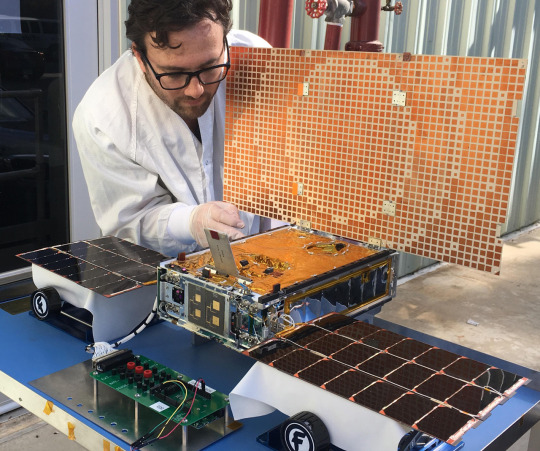
Engineer Joel Steinkraus uses sunlight to test the solar arrays on one of the Mars Cube One (MarCO) spacecraft at NASA's Jet Propulsion Laboratory. Credit: NASA/JPL-Caltech
3. Measuring Up
The size and cost of spacecraft vary depending on the application; some are the size of a pint of ice cream while others, like the Hubble Space Telescope, are as big as a school bus.
Small spacecraft (SmallSats) generally have a mass less than 400 pounds (180 kilograms) and are about the size of a large kitchen fridge.
CubeSats are a class of nanosatellites that use a standard size and form factor. The standard CubeSat size uses a "one unit" or "1U" measuring 10x10x10 centimeters (or about 4x4x4 inches) and is extendable to larger sizes: 1.5, 2, 3, 6, and even 12U.

The Sojourner rover (seen here on Mars in 1997) is an example of small technology that pioneered bigger things. Generations of larger rovers are being built on its success.
4. A Legacy of Small Pathfinders
Not unlike a CubeSat, NASA’s first spacecraft — Explorer 1 — was a small, rudimentary machine. It launched in 1958 and made the first discovery in outer space, the Van Allen radiation belts that surround Earth. It was the birth of the U.S. space program.
In 1997, a mini-rover named Sojourner rolled onto Mars, a trial run for more advanced rovers such as NASA's Spirit, Opportunity and Curiosity.
Innovation often begins with pathfinder technology, said Jakob Van Zyl, director of the Solar System Exploration Directorate at NASA's Jet Propulsion Laboratory. Once engineers prove something can be done, science missions follow.
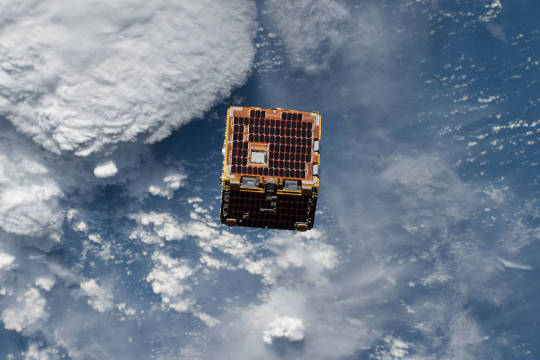
5. Testing in Space
NASA is continually developing new technologies — technologies that are smaller than ever before, components that could improve our measurements, on-board data processing systems that streamline data retrievals, or new methods for gathering observations. Each new technology is thoroughly tested in a lab, sometimes on aircraft, or even at remote sites across the world. But the space environment is different than Earth. To know how something is going to operate in space, testing in space is the best option.
Sending something unproven to orbit has traditionally been a risky endeavor, but CubeSats have helped to change that. The diminutive satellites typically take less than two years to build. CubeSats are often a secondary payload on many rocket launches, greatly reducing cost. These hitchhikers can be deployed from a rocket or sent to the International Space Station and deployed from orbit.
Because of their quick development time and easy access to space, CubeSats have become the perfect platform for demonstrating how a new technological advancement will perform in orbit.

RainCube is a mini weather satellite, no bigger than a shoebox, that will measure storms. It’s part of several new NASA experiments to track storms from space with many small satellites, instead of individual, large ones. Credit: UCAR
6. At Work in Earth Orbit
A few recent examples from our home world:
RainCube, a satellite no bigger than a suitcase, is a prototype for a possible fleet of similar CubeSats that could one day help monitor severe storms, lead to improving the accuracy of weather forecasts and track climate change over time.
IceCube tested instruments for their ability to make space-based measurements of the small, frozen crystals that make up ice clouds. Like other clouds, ice clouds affect Earth’s energy budget by either reflecting or absorbing the Sun’s energy and by affecting the emission of heat from Earth into space. Thus, ice clouds are key variables in weather and climate models.

Rocket Lab's Electron rocket lifts off from Launch Complex 1 for the NASA ELaNa19 mission. Credit: Trevor Mahlmann/Rocket Lab
7. First Dedicated CubeSat Launch
A series of new CubeSats is now in space, conducting a variety of scientific investigations and technology demonstrations following a Dec. 17, 2018 launch from New Zealand — the first time CubeSats have launched for NASA on a rocket designed specifically for small payloads.
This mission included 10 Educational Launch of Nanosatellites (ELaNa)-19 payloads, selected by NASA’s CubeSat Launch Initiative:
CubeSat Compact Radiation Belt Explorer (CeREs) — High energy particle measurement in Earth’s radiation belt
Simulation-to-Flight 1 (STF-1) — Software condensing to support CubeSat implementations
Advanced Electrical Bus (ALBus) — Advances in solar arrays and high capacity batteries
CubeSat Handling Of Multisystem Precision Time Transfer (CHOMPTT) — Navigation plans for exo-planetary implementation
CubeSail — Deployment and control of a solar sail blade
NMTSat — Magnetic field, high altitude plasma density
Rsat — Manipulation of robotic arms
Ionospheric Scintillation Explorer (ISX) — Plasma fluctuations in the upper atmosphere
Shields-1 — Radiation shielding
DaVinci — High School to Grade School STEM education
8. The Little CubeSat That Could
CubeSat technology is still in its infancy, with mission success rates hovering near 50 percent. So, a team of scientists and engineers set out on a quest. Their goal? To build a more resilient CubeSat — one that could handle the inevitable mishaps that bedevil any spacecraft, without going kaput.
They wanted a little CubeSat that could.
They got to work in 2014 and, after three years of development, Dellingr was ready to take flight.
Read the Full Story: Dellingr: The Little CubeSat That Could
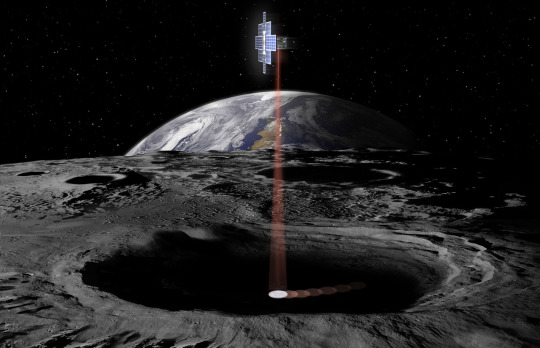
Artist's concept of Lunar Flashlight. Credit: NASA
9. Going Farther
There are a handful of proposed NASA missions could take CubeSat technology farther:
CUVE would travel to Venus to investigate a longstanding mystery about the planet’s atmosphere using ultraviolet-sensitive instruments and a novel, carbon-nanotube light-gathering mirror.
Lunar Flashlight would use a laser to search for water ice in permanently shadowed craters on the south pole of Earth’s Moon.
Near-Earth Asteroid Scout, a SmallSat, would use a solar sail to propel it to do science on asteroids that pass close to Earth.
All three spacecraft would hitch rides to space with other missions, a key advantage of these compact science machines.
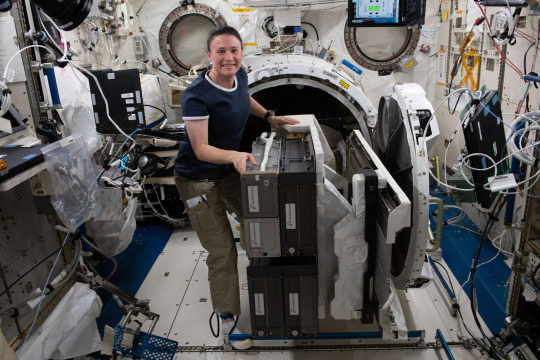
Expedition 56 Flight Engineer Serena Auñón-Chancellor installs the NanoRacks Cubesat Deployer-14 (NRCSD-14) on the Multipurpose Experiment Platform inside the Japanese Kibo laboratory module. The NRCSD-14 was then placed in the Kibo airlock and moved outside of the space station to deploy a variety of CubeSats into Earth orbit. Credit: NASA
10. And We’re Just Getting Started
Even if they're never revived, the team considers MarCO a spectacular success.
A number of the critical spare parts for each MarCO will be used in other CubeSat missions. That includes their experimental radios, antennas and propulsion systems. Several of these systems were provided by commercial vendors, making it easier for other CubeSats to use them as well.
More small spacecraft are on the way. NASA is set to launch a variety of new CubeSats in coming years.
"There's big potential in these small packages," said John Baker, the MarCO program manager at JPL. "CubeSats — part of a larger group of spacecraft called SmallSats — are a new platform for space exploration affordable to more than just government agencies."
Make sure to follow us on Tumblr for your regular dose of space: http://nasa.tumblr.com
1K notes
·
View notes
Photo

Cutaway illustration of the Lunar Module (LM) with detailed callouts. The LM was a two part spacecraft. Its lower or descent stage had the landing gear, engines, and fuel needed for the landing. When the LM blasted off the Moon, the descent stage served as the launching pad for its companion ascent stage, which was also home for the two astronauts on the surface of the Moon. The LM was full of gear with which to communicate, navigate, and rendezvous. It also had its own propulsion system, and an engine to lift it off the Moon and send it on a course toward the orbiting Command Module.
31 notes
·
View notes
Text
KSP Weekly: The Eagle Has Landed

Welcome to KSP Weekly! On this day, in 1969, Neil Armstrong and pilot Buzz Aldrin landed the Lunar Module Eagle on the Moon’s surface during the legendary Apollo 11 mission, and so fulfilled a national goal proposed in 1961 by U.S. President John F. Kennedy. This mission effectively ended the Space Race and remains unparalleled as one of, if not the greatest achievement ever accomplished by humankind.
Apollo 11 was launched by a Saturn V rocket from Kennedy Space Center on Merritt Island, Florida, on July 16 at 13:32 UTC and was the fifth manned mission of NASA's Apollo program. The Apollo spacecraft had three parts: a command module (CM) with a cabin for the three astronauts, and the only part that returned to Earth; a service module (SM), which supported the command module with propulsion, electrical power, oxygen, and water; and a lunar module (LM) that had two stages – a descent stage for landing on the Moon, and an ascent stage to place the astronauts back into lunar orbit.
After being sent to the Moon by the Saturn V's third stage, the astronauts separated the spacecraft from it and traveled for three days until they entered into lunar orbit. On July 20, 1969, the Lunar Module Eagle separated from the Command Module Columbia. Pilot Michael Collins, alone aboard the command module, inspected Eagle as it pirouetted before him to ensure the craft was not damaged. As the descent began, Armstrong and Aldrin found that they were passing landmarks on the surface four seconds early and reported that they were "long"; they would land miles west of their target point.
Five minutes into the descent burn, and 1,800 m above the surface of the Moon, the LM navigation and guidance computer distracted the crew with the first of several unexpected "1202" and "1201" program alarms. The program alarms indicated "executive overflows", meaning the guidance computer could not complete all of its tasks in real time and had to postpone some of them. After analyzing the situation, the Mission Control Center at Houston greenlit the descent.
When Armstrong again looked outside, he saw that the computer's landing target was in a boulder-strewn area just north and east of a 300-meter diameter crater (later determined to be West crater, named for its location in the western part of the originally planned landing ellipse). Armstrong took semi-automatic control and, with Aldrin calling out altitude and velocity data, landed at 20:17:40 UTC on Sunday July 20 with about 25 seconds of fuel left. Charles Duke, CAPCOM (Capsule Communicator) during the landing phase, acknowledged their landing by saying "We copy you down, Eagle."
The astronauts used Eagle's upper stage to lift off from the lunar surface and rejoin Collins in the command module on July 21, at 23:41 UTC. They jettisoned the module before they performed the maneuvers that blasted them out of lunar orbit on a trajectory back to Earth. They returned to Earth and splashed down in the Pacific Ocean on July 24 after more than eight days in space.
The landing was broadcast on live TV to a worldwide audience. Armstrong stepped onto the lunar surface and described the event as "one small step for [a] man, one giant leap for mankind."
[Development news start here]
Yesterday we released the second patch of KSP Enhanced Edition on both PS4 and Xbox One! Within this patch many bug fixes and improvements were packed, as well as a few quality-of-life features. Click here to see the full release notes.
On the PC development front, this week we continued polishing and preparing the final details for the upcoming 1.4.5 patch. If you have been following our weekly updates you’ll know that this minor patch contains several bug fixes related to the in-game implementation of Steam Workshop, plus other bug fixes for the base game and the Making History Expansion.
If you are wondering if we’ve only been doing maintenance and support work lately, you’d be wrong, but you’ll need to be patient, we’ll reveal more details after 1.4.5 is out.
By the way, with the intention of providing more guidance for new players regarding the Making History Expansion, and the Mission Builder in particular, we started a new section in the KSP Wiki. We included the foundations to create a Manual, but we want to encourage the community to participate in the enrichment of this section, so feel free to add any content you believe that needs to be expanded upon.
Remember that you can also share and download missions on Curse, KerbalX, the KSP Forum and the KSP Steam Workshop.
That’s it for this week. Be sure to join us on our official forums, and don’t forget to follow us on Twitter and Facebook. Stay tuned for more exciting and upcoming news and development updates!
Happy launchings!
*Information Source:
Apollo 11 Mission. (n.d.). Retrieved from https://www.lpi.usra.edu/lunar/missions/apollo/apollo_11/
Dunbar, B. (2015, February 19). July 20, 1969: One Giant Leap For Mankind. Retrieved from https://www.nasa.gov/mission_pages/apollo/apollo11.html
Loff, S. (2015, April 17). Apollo 11 Mission Overview. Retrieved from https://www.nasa.gov/mission_pages/apollo/missions/apollo11.html
#ksp weekly#Kerbal Space Program#making history expansion#ksp enhanced edition#apollo 12#lunar module#eagle#devnotes
10 notes
·
View notes
Text
"Grumman employee Louis Esposito checks a connection on the lunar module's rocket descent engine, at the Grumman Aircraft Engineering plant in Bethpage."
Date: March 18, 1969
Long Island Daily Press Identifier: aql:16844 ldp-000255 ldp-000255
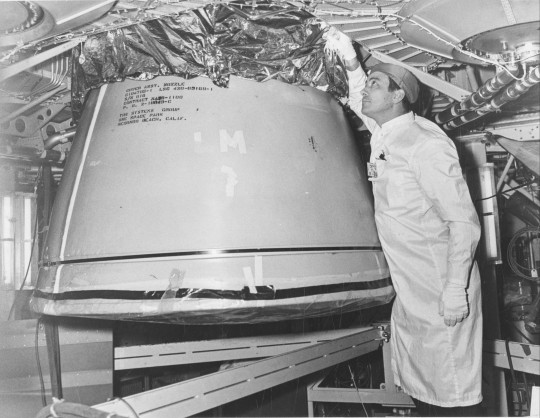
#Lunar Module#NASA#Apollo Program#Descent Propulsion System#Lunar Module Descent Engine#LMDE#Lunar descent stage propulsion#TRW VTR-10#Rocket Engine#Construction#Grumman Aerospace Corporation#Grumman#Factory#Bethpage#Long Island#New York#March#1969#my post
9 notes
·
View notes
Photo
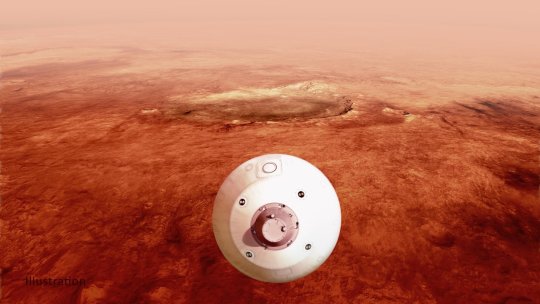
NASA’s Next Mars Rover Is Ready for the Most Precise Landing Yet Feb 16, 2021 What to expect when the Mars 2020 Perseverance rover arrives at the Red Planet on Feb. 18, 2021. With about 2.4 million miles (3.9 million kilometers) left to travel in space, NASA’s Mars 2020 Perseverance mission is days away from attempting to land the agency’s fifth rover on the Red Planet. Engineers at NASA’s Jet Propulsion Laboratory in Southern California, where the mission is managed, have confirmed that the spacecraft is healthy and on target to touch down in Jezero Crater at around 3:55 p.m. EST (12:55 p.m. PST) on Feb. 18, 2021. “Perseverance is NASA’s most ambitious Mars rover mission yet, focused scientifically on finding out whether there was ever any life on Mars in the past,” said Thomas Zurbuchen, associate administrator for the Science Mission Directorate at NASA Headquarters in Washington. “To answer this question, the landing team will have its hands full getting us to Jezero Crater – the most challenging Martian terrain ever targeted for a landing.” Jezero is a basin where scientists believe an ancient river flowed into a lake and deposited sediments in a fan shape known as a delta. Scientists think the environment here was likely to have preserved signs of any life that gained a foothold billions of years ago – but Jezero also has steep cliffs, sand dunes, and boulder fields. Landing on Mars is difficult – only about 50% of all previous Mars landing attempts have succeeded – and these geological features make it even more so. The Perseverance team is building on lessons from previous touchdowns and employing new technologies that enable the spacecraft to target its landing site more accurately and avoid hazards autonomously. “The Perseverance team is putting the final touches on the complex choreography required to land in Jezero Crater,” said Jennifer Trosper, deputy project manager for the mission at JPL. “No Mars landing is guaranteed, but we have been preparing a decade to put this rover’s wheels down on the surface of Mars and get to work.” You will get to watch the drama of Perseverance’s entry, descent, and landing (EDL) – the riskiest portion of the rover’s mission that some engineers call the “seven minutes of terror” – live on NASA TV. Commentary starts at 2:15 p.m. EST (11:15 a.m. PST) on Feb. 18. Engineers expect to receive notice of key milestones for landing at the estimated times below. (Because of the distance the signals have to travel from Mars to Earth, these events actually take place on Mars 11 minutes, 22 seconds earlier than what is noted here.) Cruise stage separation: The part of the spacecraft that has been flying Perseverance – with NASA’s Ingenuity Mars Helicopter attached to its belly – through space for the last six-and-a-half months will separate from the entry capsule at about 3:38 p.m. EST (12:38 p.m. PST). Atmospheric entry: The spacecraft is expected to hit the top of the Martian atmosphere traveling at about 12,100 mph (19,500 kph) at 3:48 p.m. EST (12:48 p.m. PST). Peak heating: Friction from the atmosphere will heat up the bottom of the spacecraft to temperatures as high as about 2,370 degrees Fahrenheit (about 1,300 degrees Celsius) at 3:49 p.m. EST (12:49 p.m. PST). Parachute deployment: The spacecraft will deploy its parachute at supersonic speed at around 3:52 p.m. EST (12:52 p.m. PST). The exact deployment time is based on the new Range Trigger technology, which improves the precision of the spacecraft’s ability to hit a landing target. Heat shield separation: The protective bottom of the entry capsule will detach about 20 seconds after the parachute deployment. This allows the rover to use a radar to determine how far it is from the ground and employ its Terrain-Relative Navigation technology to find a safe landing site. Back shell separation: The back half of the entry capsule that is fastened to the parachute will separate from the rover and its “jetpack” (known as the descent stage) at 3:54 p.m. EST (12:54 p.m. PST). The jetpack will use retrorockets to slow down and fly to the landing site. Touchdown: The spacecraft’s descent stage, using the sky crane maneuver, will lower the rover down to the surface on nylon tethers. The rover is expected to touch down on the surface of Mars at human walking speed (about 1.7 mph, or 2.7 kph) at around 3:55 p.m. EST (12:55 p.m. PST). A variety of factors can affect the precise timing of the milestones listed above, including properties of the Martian atmosphere that are hard to predict until the spacecraft actually flies through. Mission controllers also may not be able to confirm these milestones at the times listed above because of the complexity of deep-space communications. The flow of detailed engineering data (called telemetry) in near-real-time relies on a new kind of relay capability added this past year to NASA’s Mars Reconnaissance Orbiter (MRO). Engineers expect additional data to return to Earth directly through NASA’s Deep Space Network and two other Earth-based antennas until shortly before touchdown. It’s important to note that the rover can land safely on Mars without communications with Earth: Perseverance has pre-programmed landing instructions and significant autonomy. Additional communication passes are planned in the hours and days following the landing event. Once on the surface, one of Perseverance’s first activities will be to take pictures of its new home and transmit them back to Earth. Over the following days, engineers will also check on the health of the rover and deploy the remote sensing mast (otherwise known as its “head”) so it can take more pictures. The Perseverance team will then take more than a month to thoroughly inspect the rover and load new flight software to prepare for its search for ancient life on Mars. During the same period, the Ingenuity Mars Helicopter team will be making sure their small but mighty robot is prepared for the first attempt at controlled, powered aerodynamic flight on another planet. “The Ingenuity team will be on the edge of our seats with the Perseverance team on landing day,” said MiMi Aung, the Ingenuity project manager at JPL. “We can’t wait until the rover and the helicopter are both safely on the surface of Mars and ready for action.” More About the Perseverance Mission A key objective of Perseverance’s mission on Mars is astrobiology, including the search for signs of ancient microbial life. The rover will characterize the planet’s geology and past climate, pave the way for human exploration of the Red Planet, and will be the first mission to collect and cache Martian rock and sediment for later return to Earth. Subsequent NASA missions, in cooperation with ESA (European Space Agency), would send spacecraft to Mars to collect these sealed samples from the surface and return them to Earth for in-depth analysis. The Mars 2020 mission is part of a larger NASA initiative that includes missions to the Moon as a way to prepare for human exploration of the Red Planet. NASA will establish a sustained human presence on and around the Moon through NASA’s Artemis lunar exploration plans. JPL, a division of Caltech in Pasadena, California, manages the Mars 2020 Perseverance mission and the Ingenuity Mars Helicopter technology demonstration for NASA.
4 notes
·
View notes
Text
NASA loads 14 companies with $370M for ‘tipping point’ technologies
NASA has announced more than a third of a billion dollars worth of “Tipping Point” contracts awarded to over a dozen companies pursuing potentially transformative space technologies. The projects range from in-space testing of cryogenic tech to a 4G LTE network for the Moon.
The space agency is almost always accepting applications for at least one of its many grant and contract programs, and Tipping Point is directly aimed at commercial space capabilities that need a bit of a boost. According to the program description, “a technology is considered at a tipping point if an investment in a demonstration will significantly mature the technology, increase the likelihood of infusion into a commercial space application, and bring the technology to market for both government and commercial applications.”
How to access ‘America’s Seed Fund,’ the $3 billion SBIR program
In this year’s awards, which take the form of multi-year contracts with multiple milestones, the focus was on two main areas: cryogenics and lunar surface tech. Note that the amounts provided are not necessarily the cost of developing the tech, but rather the sums deemed necessary to advance it to the next stage. Here’s a brief summary of each award:
Cryogenics
Eta Space, $27M: In-space demonstration of a complete cryogenic oxygen management system
Lockheed Martin, $89.7M: In-space demonstration of liquid hydrogen in over a dozen cryogenic applications
SpaceX, $53.2M: Flight demonstration transferring 10 tons of liquid oxygen between tanks in Starship
ULA, $86.2M: Demonstration of a smart propulsion cryogenic system on a Vulcan Centaur upper stage
Lunar surface innovation
Alpha Space Test and Research Alliance, $22.1M: Develop a small tech and science platform for lunar surface testing
Astrobotic, $5.8M: “Mature” a fast wireless charging system for use on the lunar surface
Intuitive Machines, $41.6M: Develop a hopper lander with a 2.2-pound payload capacity and 1.5-mile range
Masten Space Systems, $2.8M: Demonstrate a universal chemical heat and power source for lunar nights and craters
Masten Space Systems, $10M: Demonstrate precision landing an hazard avoidance on its Xogdor vehicle (Separate award under “descent and landing” heading)
Nokia of America, $14.1M: Deploy the first LTE network in space for lunar surface communications
pH Matter, $3.4M: Demonstrate a fuel cell for producing and storing energy on the lunar surface
Precision Compustion, $2.4M: Advance a cheap oxide fuel stack to generate power from propellants
Sierra Nevada, $2.4M: Demonstrate a device using solar energy to extract oxygen from lunar regolith
SSL Robotics, $8.7M: Develop a lighter, cheaper robotic arm for surface, orbital, and “terrestrial defense” applications
Teledyne Energy Systems, $2.8M: Develop a hydrogen fuel cell power system with a 10,000-hour battery life
You can read more about the proposal process and NASA’s areas of interest at the Tipping Point solicitation page.
NASA puts $7M toward long-shot research, from moon mining to solar lenses
0 notes
Photo

@stamp_sellers A Day to Remember Apollo 11 was the spaceflight that first landed humans on the Moon. Commander Neil Armstrong and lunar module pilot Buzz Aldrinformed the American crew that landed the Apollo Lunar Module Eagle on July 20, 1969, at 20:17 UTC. Armstrong became the first person to step onto the lunar surface six hours and 39 minutes later on July 21 at 02:56 UTC; Aldrin joined him 19 minutes later. They spent about two and a quarter hours together outside the spacecraft, and they collected 47.5 pounds (21.5 kg) of lunar material to bring back to Earth. Command module pilot Michael Collins flew the Command Module Columbia alone in lunar orbit while they were on the Moon's surface. Armstrong and Aldrin spent 21 hours, 36 minutes on the lunar surface at a site they named Tranquility Base before lifting off to rejoin Columbia in lunar orbit. Apollo 11 was launched by a Saturn V rocket from Kennedy Space Center on Merritt Island, Florida, on July 16 at 13:32 UTC, and it was the fifth crewed mission of NASA's Apollo program. The Apollo spacecraft had three parts: a command module (CM) with a cabin for the three astronauts, the only part that returned to Earth; a service module (SM), which supported the command module with propulsion, electrical power, oxygen, and water; and a lunar module (LM) that had two stages—a descent stage for landing on the Moon and an ascent stage to place the astronauts back into lunar orbit. Source: Wikipedia #neilsarmstrong #buzzaldrin #michaelcollins #USA #SPACEX #astronomy #solarsystem #astrophotography #astronomia #luna #moon #nasa #apollo #apolo11 #astronauts #bulan #yeliang #ngapung #turbo #rocket #oxygen #space #cosmos #milkyway #earth #summer #unibverse #horizon #alien #meteor https://www.instagram.com/p/CEZit80H6Hj/?igshid=fg46vvzbjkhb
#neilsarmstrong#buzzaldrin#michaelcollins#usa#spacex#astronomy#solarsystem#astrophotography#astronomia#luna#moon#nasa#apollo#apolo11#astronauts#bulan#yeliang#ngapung#turbo#rocket#oxygen#space#cosmos#milkyway#earth#summer#unibverse#horizon#alien#meteor
0 notes
Text
NASA's Perseverance Rover Attached to Atlas V Rocket NASA ^ | July 9, 2020
NASA's Perseverance Mars rover has been attached to the top of the rocket that will send it toward the Red Planet this summer. Encased in the nose cone that will protect it during launch, the rover and the rest of the Mars 2020 spacecraft – the aeroshell, cruise stage, and descent stage – were affixed to a United Launch Alliance Atlas V booster on Tuesday, July 7, at Cape Canaveral Air Force Station in Central Florida.
The process began when a 60-ton hoist on the roof of the Vertical Integration Facility at Space Launch Complex 41 lifted the nose cone, otherwise known as the payload fairing, 129 feet (39 meters) to the top of the waiting rocket. There, engineers made the physical and electrical connections that will remain between booster and spacecraft until about 50 to 60 minutes after launch, when the two are pyrotechnically separated and Perseverance is on its way.
Lifting Perseverance Lifting Perseverance: NASA's Mars 2020 Perseverance rover waits to be lifted onto its Atlas V launch vehicle at the Cape Canaveral Air Force Station in Florida on July 7, 2020. Credits: NASA/KSC. Download image ›
"I have seen my fair share of spacecraft being lifted onto rockets," said John McNamee, project manager for the Mars 2020 Perseverance rover mission at NASA's Jet Propulsion Laboratory in Southern California. "But this one is special because there are so many people who contributed to this moment. To each one of them I want to say, we got here together, and we'll make it to Mars the same way."
With the mating of spacecraft and booster complete, the final testing of the two (separately and as one unit) will be underway. Then two days before the July 30 launch, the Atlas V will leave the Vertical Integration Facility for good. Traveling by rail, it will cover the 1,800 feet (550 meters) to the launch pad in about 40 minutes. From there, Perseverance has about seven months and 290 million miles (467 million kilometers) to go before arriving at Mars.
NASA and United Launch Alliance recently updated the mission's launch period – the range of days the rocket can launch in order to reach Mars. It now spans from July 30 to Aug. 15.
The launch period opening changed from July 17 to 30 due to launch vehicle processing delays in preparation for spacecraft mate operations. Four days were also added to the previously designated Aug. 11 end of the launch period. NASA and United Launch Alliance Flight Teams were able to provide those extra days after final weights of both the spacecraft and launch vehicle became available, allowing them to more accurately calculate the propellant available to get Perseverance on its way.
No matter what day Perseverance lifts off during its July 30 to Aug. 15 launch period, it will land in Mars' Jezero Crater on Feb. 18, 2021. Targeting landing for one specific date and time helps mission planners better understand lighting and temperature at the landing site, as well as the location of Mars-orbiting satellites tasked with recording and relaying spacecraft data during its descent and landing.
Managed by JPL, the Mars 2020 Perseverance rover's astrobiology mission will search for signs of ancient microbial life. It will also characterize the planet's climate and geology, pave the way for human exploration of the Red Planet, and be the first planetary mission to collect and cache Martian rock and regolith (broken rock and dust). Subsequent missions, currently under consideration by NASA in cooperation with the European Space Agency, would send spacecraft to Mars to collect these cached samples from the surface and return them to Earth for in-depth analysis.
The Mars 2020 mission is part of a larger program that includes missions to the Moon as a way to prepare for human exploration of the Red Planet. Charged with returning astronauts to the Moon by 2024, NASA will establish a sustained human presence on and around the Moon by 2028 through NASA's Artemis lunar exploration plans.
TOPICS: Miscellaneous
KEYWORDS: atlasv; nasa; perseverance; rover
0 notes
Photo
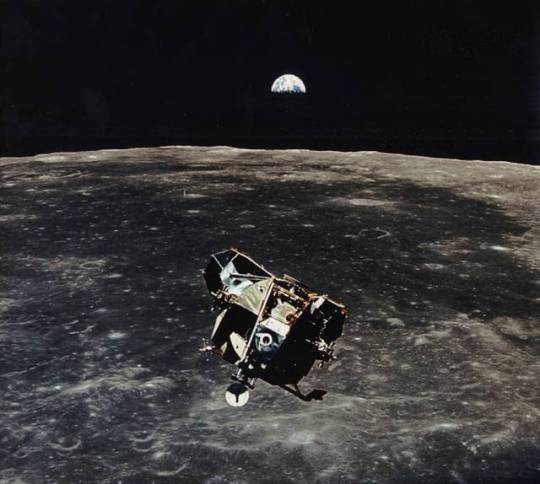
The Apollo 11 mission launched from the Kennedy Space Center in Florida via the Marshall Space Flight Center developed Saturn V launch vehicle on July 16, 1969 and safely returned to Earth on July 24, 1969. Aboard the space craft were astronauts Neil A. Armstrong, commander; Michael Collins, Command Module (CM) pilot; and Edwin E. “Buzz” Aldrin Jr., Lunar Module (LM) pilot. With the success of Apollo 11, the national objective to land men on the Moon and return them safely to Earth had been accomplished. After 2½ hours of surface exploration, astronauts Neil Armstrong and Edwin Aldrin returned to the LM “Eagle” for rest, eating, and checkout of the vehicle in preparation for liftoff. The LM was a two part spacecraft. Its lower or descent stage had the landing gear, engines, and fuel needed for the landing. When the LM blasted off the Moon, the descent stage served as the launching pad for its companion ascent stage, which was also home for the two astronauts on the surface of the Moon. The LM was full of gear with which to communicate, navigate, and rendezvous. It also had its own propulsion system, and an engine to lift it off the Moon and send it on a course toward the orbiting CM. In this photograph, the ascent stage is seen back dropped my Earth just prior to its rendezvous with the CM
#esa#sky#nasa#love#galaxy#asi#spacegram#space#astronaut#spaceflight#nebula#moon#marsgeneration#mooncolonist#astro_lorenzo#universe#earth#cosmos#astronomy#themarsgeneration
30 notes
·
View notes
Text
Mars 2020 unwrapped and ready for testing
https://sciencespies.com/space/mars-2020-unwrapped-and-ready-for-testing/
Mars 2020 unwrapped and ready for testing
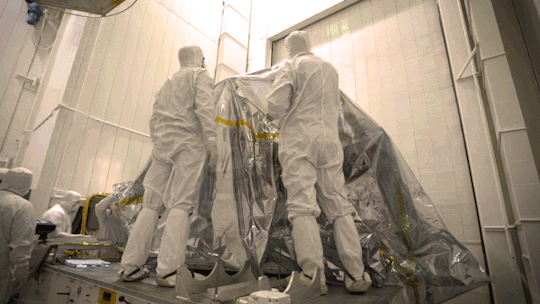

Credit: JPL/NASA
More
In this time-lapse video, taken on Oct. 4, 2019, at NASA’s Jet Propulsion Laboratory in Pasadena, California, bunny-suited engineers remove the inner layer of protective antistatic foil on the Mars 2020 rover after the vehicle was relocated from JPL’s Spacecraft Assembly Facility to the Simulator Building for testing.
“The Mars 2020 rover will be collecting samples for future return to Earth, so it must meet extraordinary cleanliness measures to avoid the possibility of contaminating Martian samples with terrestrial contaminants,” said Paul Boeder, contamination control lead for Mars 2020 at JPL. “To ensure we maintain cleanliness at all times, we need to keep things clean not only during assembly and testing, but also during the moves between buildings for these activities.”
After removing the first layer of antistatic foil (just prior this time-lapse), the teams used 70% isopropyl alcohol to meticulously wipe down the remaining layer, seen here, along with the trailer carrying the rover. Later that day, the rover was moved into the larger main room of the Simulator Building. In the coming weeks, the rover will enter a massive vacuum chamber for surface thermal testing – a weeklong evaluation of how its instruments, systems and subsystems operate in the frigid, near-vacuum environment it will face on Mars.
JPL is building and will manage operations of the Mars 2020 rover for NASA. The rover will launch on a United Launch Alliance Atlas V rocket in July 2020 from Space Launch Complex 41 at Cape Canaveral Air Force Station. NASA’s Launch Services Program, based at the agency’s Kennedy Space Center in Florida, is responsible for launch management.
When the rover lands at Jezero Crater on Feb. 18, 2021, it will be the first spacecraft in the history of planetary exploration with the ability to accurately retarget its point of touchdown during the landing sequence.
Charged with returning astronauts to the Moon by 2024, NASA’s Artemis lunar exploration plans will establish a sustained human presence on and around the Moon by 2028. We will use what we learn on the Moon to prepare to send astronauts to Mars.
Interested K-12 students in U.S. public, private and home schools can enter the Mars 2020 Name the Rover essay contest. One grand prize winner will name the rover.
Explore further
NASA’s Mars 2020 rover tests descent-stage separation
Provided by
JPL/NASA
Citation:
Mars 2020 unwrapped and ready for testing (2019, October 19)
retrieved 19 October 2019
from https://phys.org/news/2019-10-mars-unwrapped-ready.html
This document is subject to copyright. Apart from any fair dealing for the purpose of private study or research, no
part may be reproduced without the written permission. The content is provided for information purposes only.
#Space
0 notes
Photo

Apollo 11 was the spaceflight that landed the first two people on the Moon. Commander Neil Armstrong and lunar module pilot Buzz Aldrin, both American, landed the Apollo Lunar Module Eagle on July 20, 1969. Armstrong became the first person to step onto the lunar surface six hours later on July 21; Aldrin joined him 19 minutes later. They spent about two and a quarter hours together outside the spacecraft, and collected 47.5 pounds of lunar material to bring back to Earth. Command module pilot Michael Collins flew the command module Columbia alone in lunar orbit while they were on the Moon's surface. Armstrong and Aldrin spent 21.5 hours on the lunar surface before rejoining Columbia in lunar orbit.
Apollo 11 was launched by a Saturn V rocket from Kennedy Space Centeron Merritt Island, Florida, on July 16, and was the fifth crewed mission of NASA's Apollo program. The Apollo spacecraft had three parts: a command module (CM) with a cabin for the three astronauts, and the only part that returned to Earth; a service module (SM), which supported the command module with propulsion, electrical power, oxygen, and water; and a lunar module (LM) that had two stages – a descent stage for landing on the Moon, and an ascent stage to place the astronauts back into lunar orbit.
After being sent to the Moon by the Saturn V's third stage, the astronauts separated the spacecraft from it and traveled for three days until they entered lunar orbit. Armstrong and Aldrin then moved into Eagle and landed in the Sea of Tranquillity. The astronauts used Eagle's ascent stage to lift off from the lunar surface and rejoin Collins in the command module. They jettisoned Eagle before they performed the maneuvers that blasted them out of lunar orbit on a trajectory back to Earth. They returned to Earth and splashed down in the Pacific Ocean on July 24 after more than eight days in space.
Armstrong's first step onto the lunar surface was broadcast on live TV to a worldwide audience. He described the event as “one small step for man, one giant leap for mankind”. Apollo 11 effectively ended the Space Race and fulfilled a national goal proposed in 1961 by President John F. Kennedy: “before this decade is out, of landing a man on the Moon and returning him safely to the Earth.”
0 notes
Photo
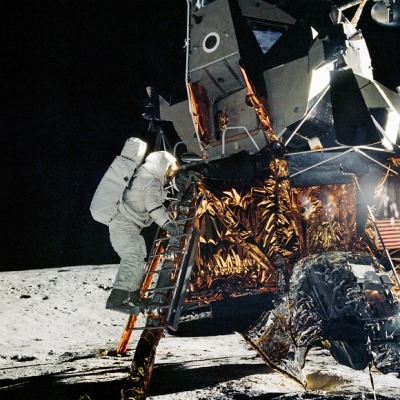
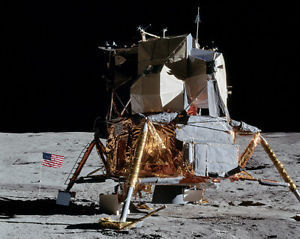

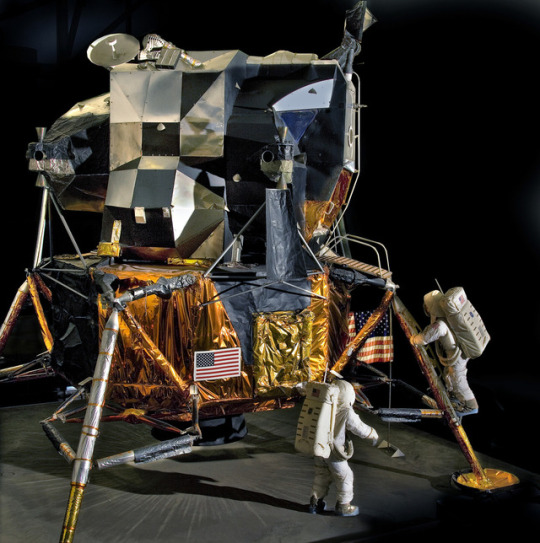


The Lunar Excursion Module ( LEM )
The Apollo Lunar Module, or simply lunar module, originally designated the lunar excursion module, was the spacecraft which was flown to and landed on the Moon. The lander spacecraft were built for the US Apollo program by Grumman Aircraft. The lunar module, consisting of a descent stage and an ascent stage, was ferried from the Earth to the Moon attached to the Apollo spacecraft command and service module (CSM), approximately twice its mass. The ascent stage carried a crew of two who flew the spacecraft from lunar orbit to the surface and later back to the command module. Designed for lunar orbit rendezvous, the Apollo Lunar Module was discarded after completing its misson. It was capable of operation only in outer space; structurally and aerodynamically it was incapable of flight through the Earth's atmosphere. The lunar module was the first manned spacecraft to operate exclusively in the airless vacuum of space. It was the first, and to date only, crewed vehicle to land anywhere beyond Earth.
The LM's development was plagued with problems which delayed its first unmanned flight by about ten months, and its first manned flight by about three months. Despite this, the LM eventually became the most reliable component of the Apollo/Saturn space vehicle, the only component never to suffer a failure that could not be corrected in time to prevent abort of a landing mission.
Ten lunar modules were launched into space. Of these, six successfully landed humans on the Moon between 1969 and 1972. The first two launched were test flights in low Earth orbit—the first without a crew, the second with one. Another was used by Apollo 10 for a "dress rehearsal" flight in low lunar orbit, without landing. One lunar module functioned as a "lifeboat" for the crew of Apollo 13, providing life support and propulsion when their CSM was disabled by an oxygen tank explosion en route to the Moon, forcing the crew to abandon their landing.
The total cost of the LM for development and the units produced was $21.3B in 2016 dollars, adjusting from a nominal total of $2.2B using the NASA New Start Inflation Indices. The six landed descent stages remain intact where they landed and one ascent stage (Apollo 10's) is in heliocentric orbit. All the other LMs that flew either crashed into the Moon or burned up in the Earth's atmosphere.
0 notes